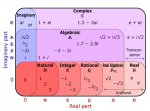Sorry eastcoast, you are wrong. The horizontal movement of the ball for both pitches is identical. Here is the NASA link: CurveBall Expert Version - 1.7e beta Doesn't matter if it is a 100MPH or 30 MPH, the amount of horizontal break is the same as long as the spin is the same.
The Magnus Force (the force that makes the ball curve) is directly proportional to the speed of the ball. The faster the ball, the greater the force. But, the faster the ball, the less time the ball has to move. They cancel each other out. The only factor in horizontal movement is the spin on the ball and the direction of spin.
The Magnus Force (the force that makes the ball curve) is directly proportional to the speed of the ball. The faster the ball, the greater the force. But, the faster the ball, the less time the ball has to move. They cancel each other out. The only factor in horizontal movement is the spin on the ball and the direction of spin.
Last edited:





